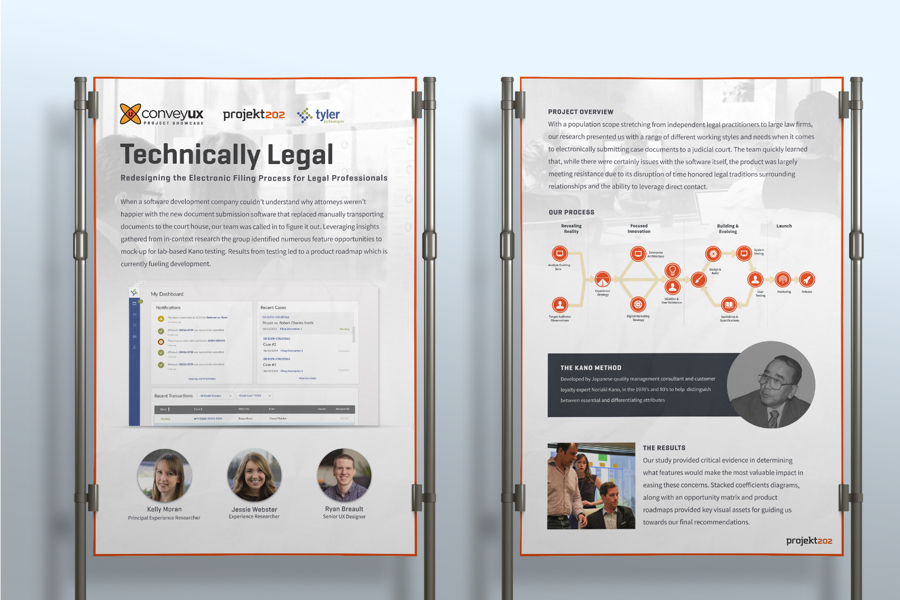Loading


Due to recently passed legislation, Tyler Technologies was required to provide free access to their core e-filing product resulting in a significant loss of revenue. By confirming previous and expanding upon previous assumptions we were able to provide a strategy for prioritizing and executing.
Tyler Technologies is a publicly traded software company that provides electronic filing software applications to lawyers and attorneys across the country.
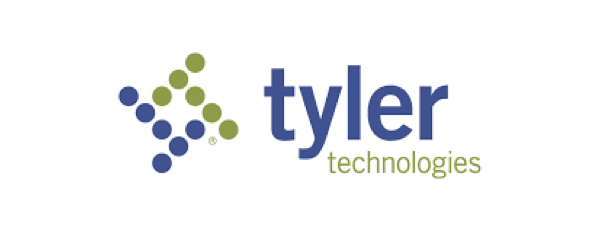
I was the UX Designer assigned to provide research assistance, note transcription, presentation creation and workshop assistance. The engagement was my first foray into generative research.
We were tasked with affirming previously identified feature enhancement generated by past research and customer service records while simultaneously revealing other opportunities.
Tyler Technologies approached projekt202 specifically for our “Revealing Reality” portion of our methodology. This stage focused on understanding the client’s needs through stakeholder interviews, provisional persona workshops followed by on-site observation and contextual inquiries.
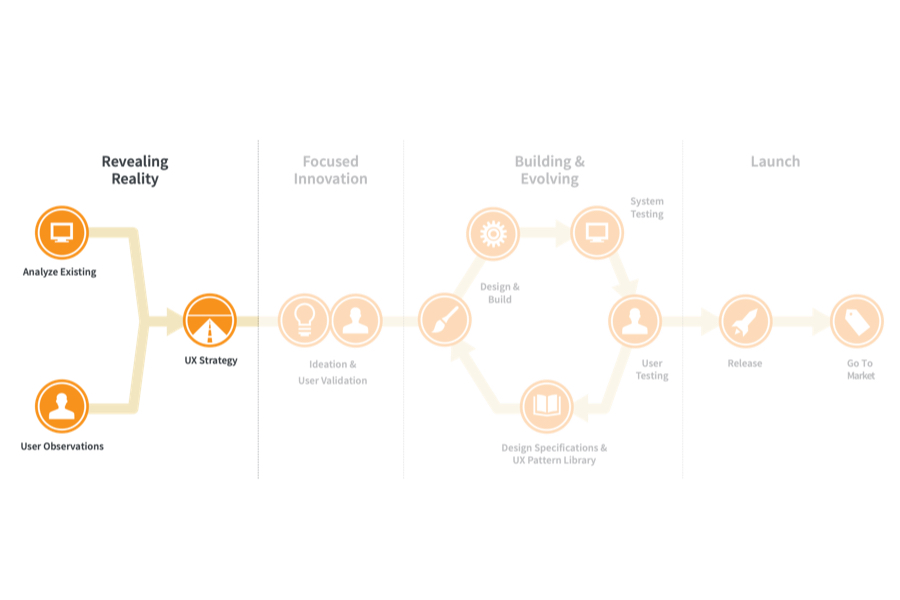
In order to provide a cohesive solution that both satisfies the customer and the company’s requirements, it is crucial to engage with all level of the product organization. We spent time speaking to 7 stakeholders ranging from VPs, managers, business analysts, and software architects.
We observed how attorneys and law personnel perform their jobs to understand how Tyler Technologies can better serve law offices while adding value on a daily basis.
With study participants ranging from independent legal practitioners to employees within glarge law firms, our findings revealed a variety of working styles and needs when it comes to electronically submitting case documents to a judicial court.
The team quickly learned that while there were certainly issues with the software itself, the product was largely meeting resistance due to its disruption of time honored legal traditions surrounding relationships and the ability to leverage direct contacts.
An overwhelming majority of eFiling was conducted by either the legal secretaries or paralegals, with the exception of independent attorney who didn’t have a support staff.
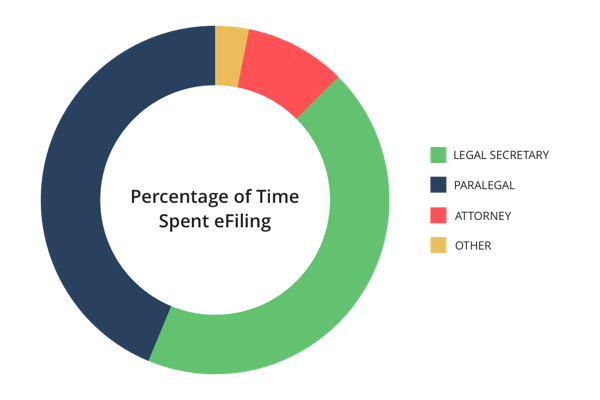
“I wouldn’t have a clue how to work it.”
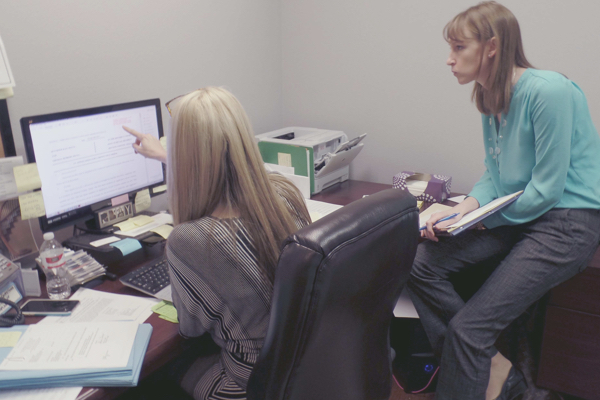
“Maybe someday I’ll get to the point where I’m paperless… That just scares the hell out of me.”
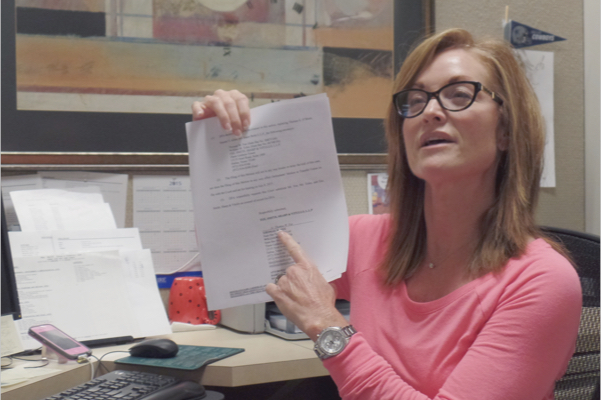
In order to collate the massive data pool collected throughout the interview process, the team affinitized the data points into related themes and sentiments. The method allowed us to identify motifs and opportunities for an upcoming Kano study, while providing the client with a new perspective of their presumed eFilers.
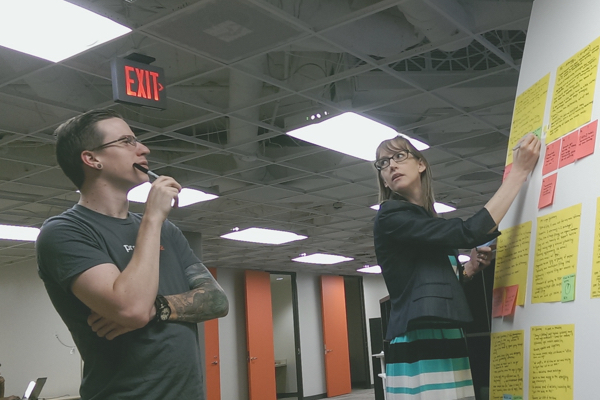
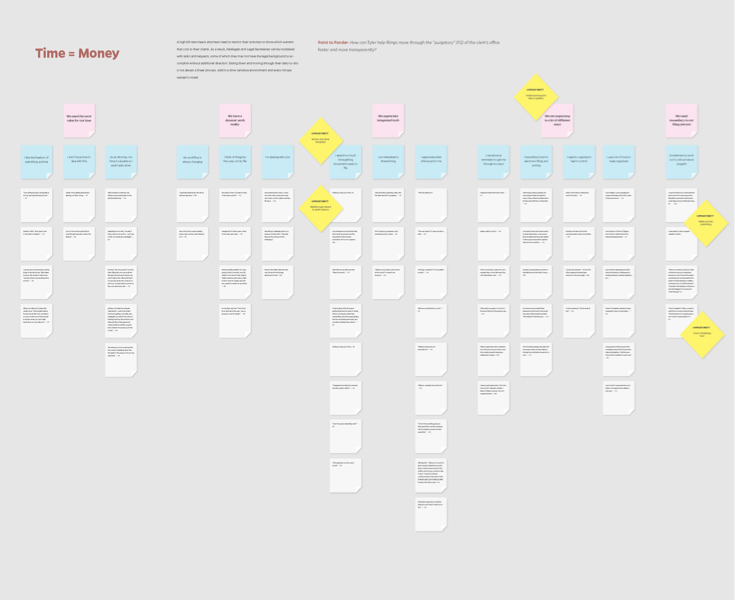
The constant need to communicate things internally to everyone in the practice means that sticky notes, shared calendars and shouting down the hall are a constant backdrop to serious legal work. To compensate for this customized approaches to work processes occur both at the individual and firm level.
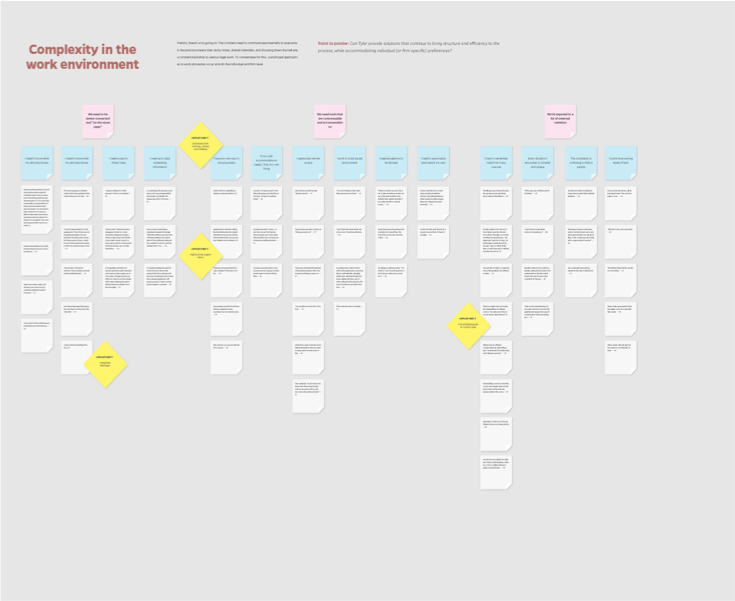
A high bill rate means attorneys need to restrict their activities to those which warrant that cost to their clients. As a result, Paralegals and Legal Secretaries can be inundated with tasks and requests, some of which they may not have the legal background to accomplish without further direction. Sitting down and moving through their daily to dos is not always a linear process. Add in time -sensitive environment and every minuted wasted is notes.
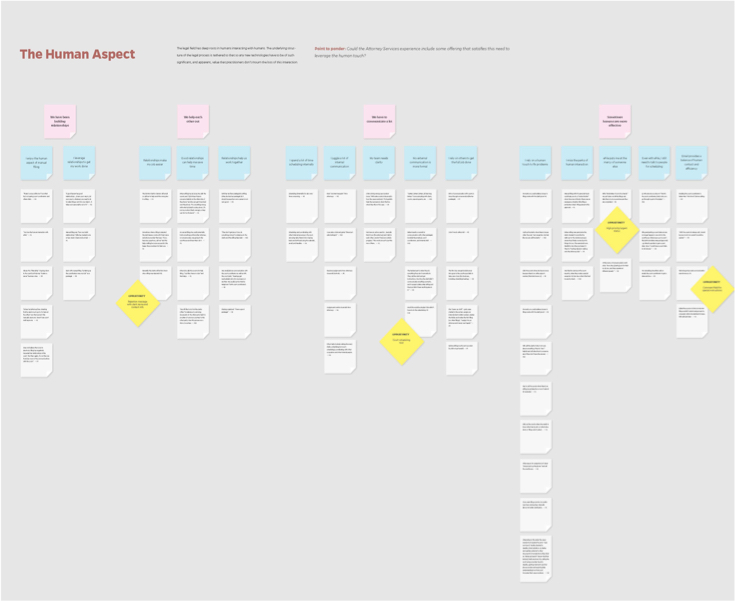
The legal field has deep roots in human interacting with humans. The underlying structure of how the legal process happens is tethered to that so any new technologies have to be of such significant, and apparent value, that practitioners don’t mourn the loss of the interaction.
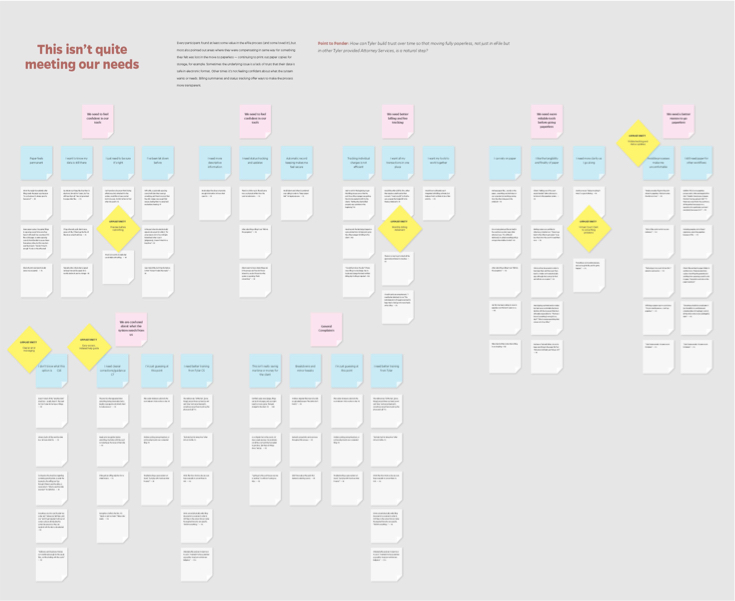
Every participant found at least some value in the eFile process (and some loved it!) but most pointed out areas where they were compensating in same way for something they felt was lost in the move to paperless - continuing to print out paper copies for storage, for example. Sometime the underlying issue is a lack of trust that their data is safe in electronic format. Other time it’s not feeling confidant about what the system wants or needs. Billing summaries and status tracking offer ways to make the process more transparent.
While the project remained within our “Revealing Reality” phase it was not without a substantial amount of design work. In order to validate previously identified and newly revealed enhancement opportunities, the team prepared for a Kano study to help rank the potential value of each feature.
The Kano method is a theory for product development and customer satisfaction developed by Professor Noriaki Kano in the 1980s, classifying customer preferences into five categories.
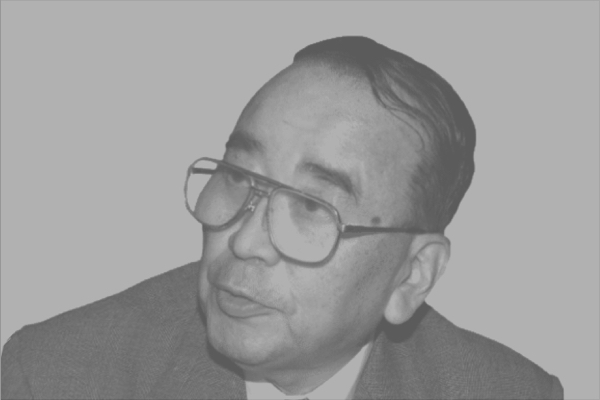
The categories are determined by asking functional and dysfunctional questions (For example how would you feel about having a car that get 200mpg Like it, Expect it, neutral, tolerate or dislike. How would you feel if you. Didn’t?)
This was followed by asking if they would pay more for a this feature, choose a service with tis feature over one for the same price, rather not use a service with the feature or no impact. I helped create the 15 feature mockups to better help participants visualize the features in question.
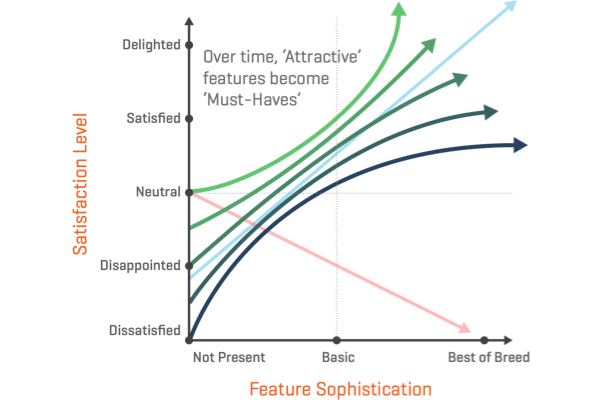
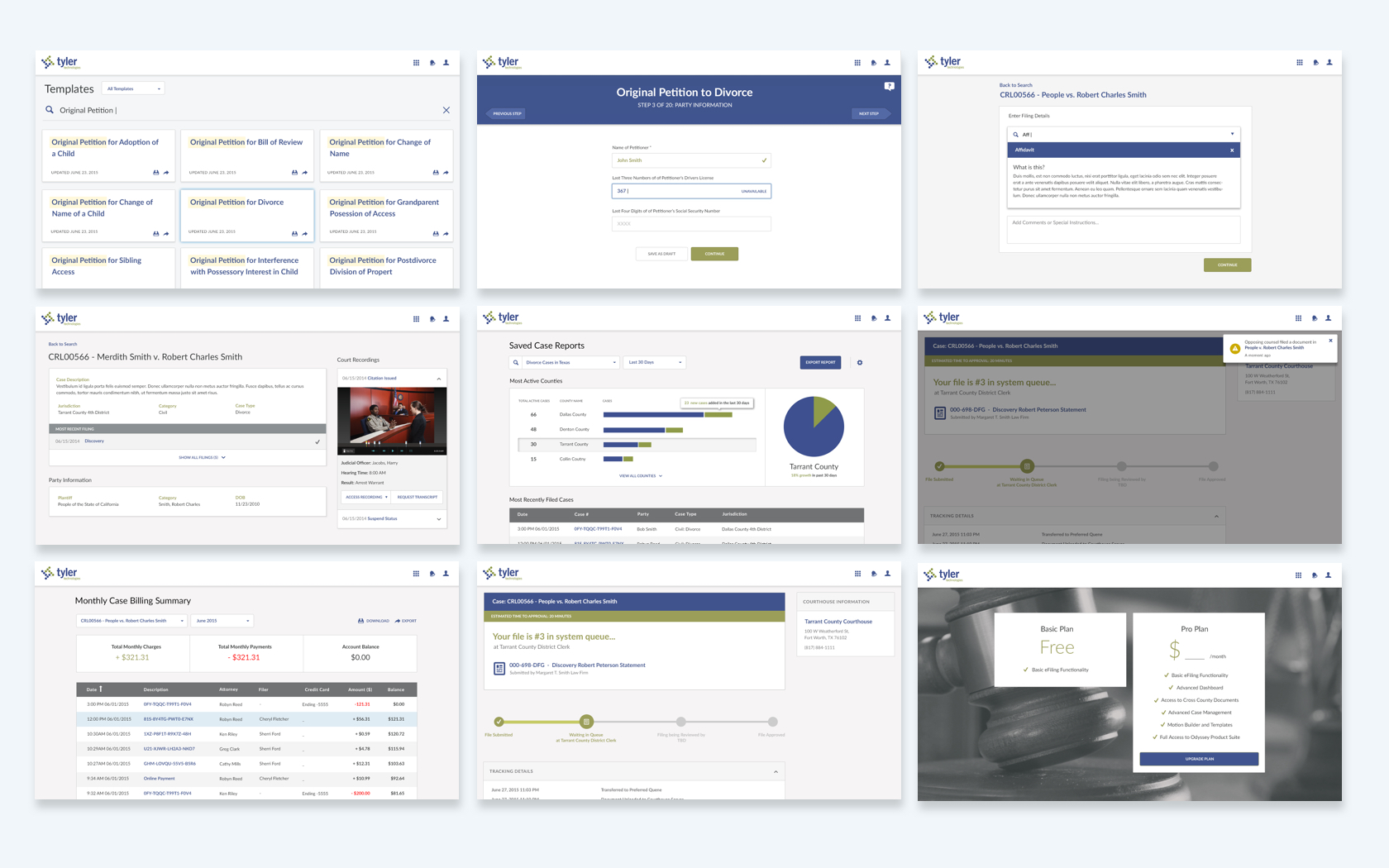
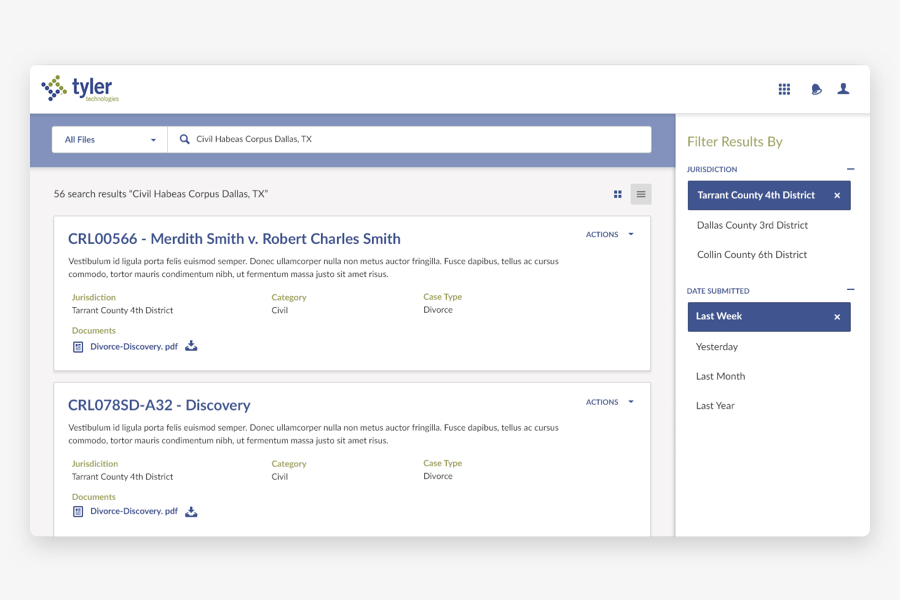
“[It] would be worth $100 a month just for the ability to search cross country.”
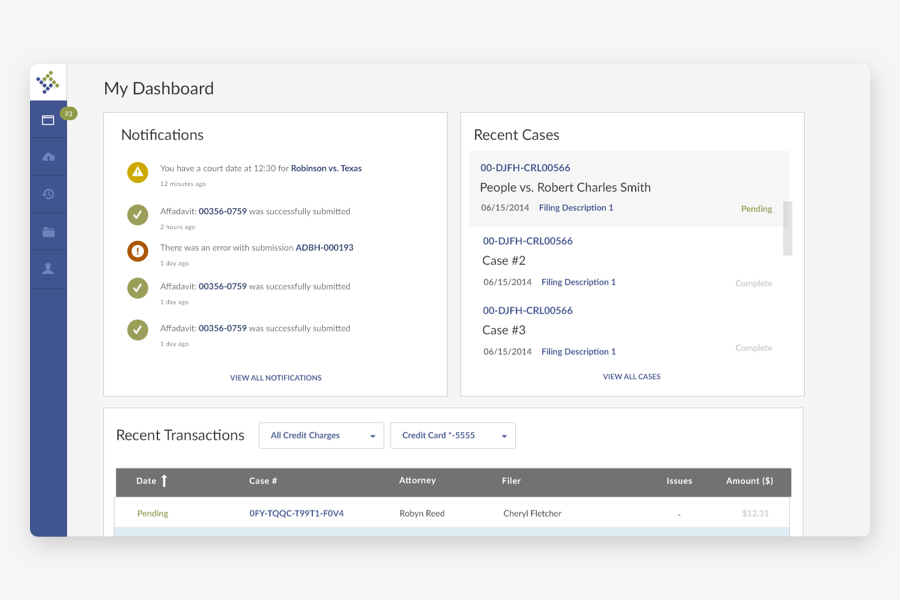
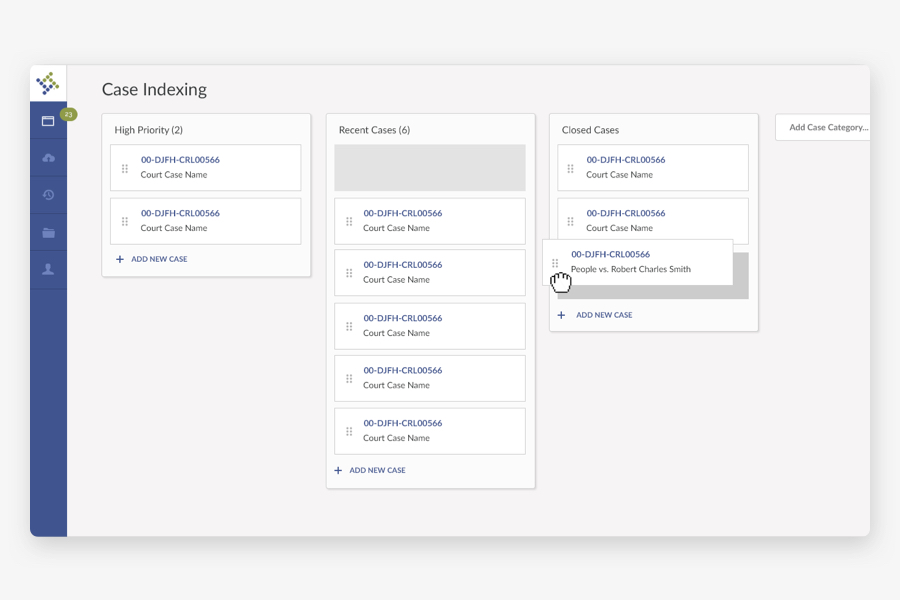
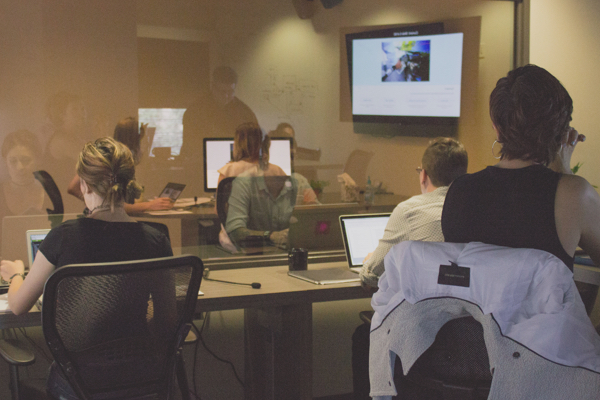
By plotting the coefficients of each feature, we were able to determine the value of the prospective product enhancements. Results yielded a number of attractive features, common with innovation projects. Some of the top ones, included a multi database search, central dashboard for filing status and activity, and case indexing.
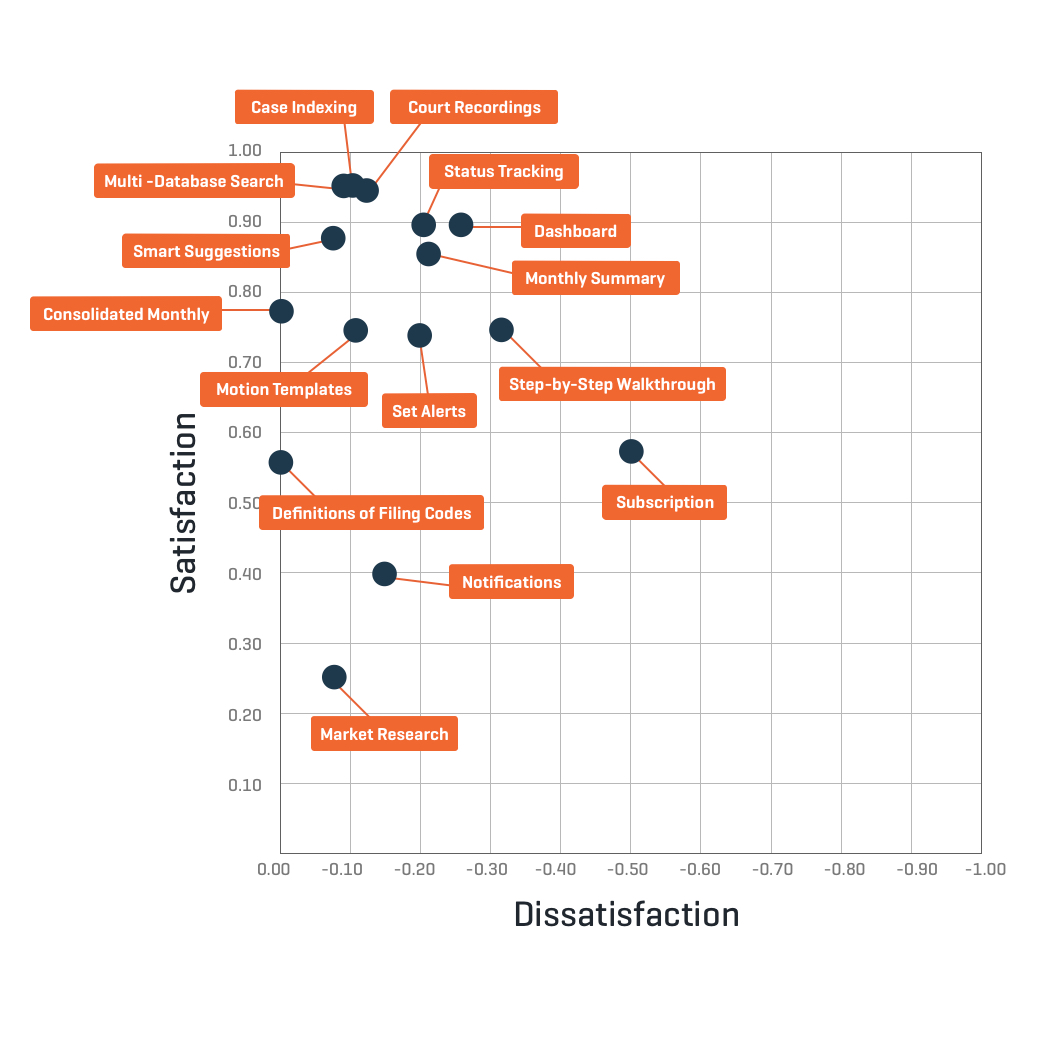
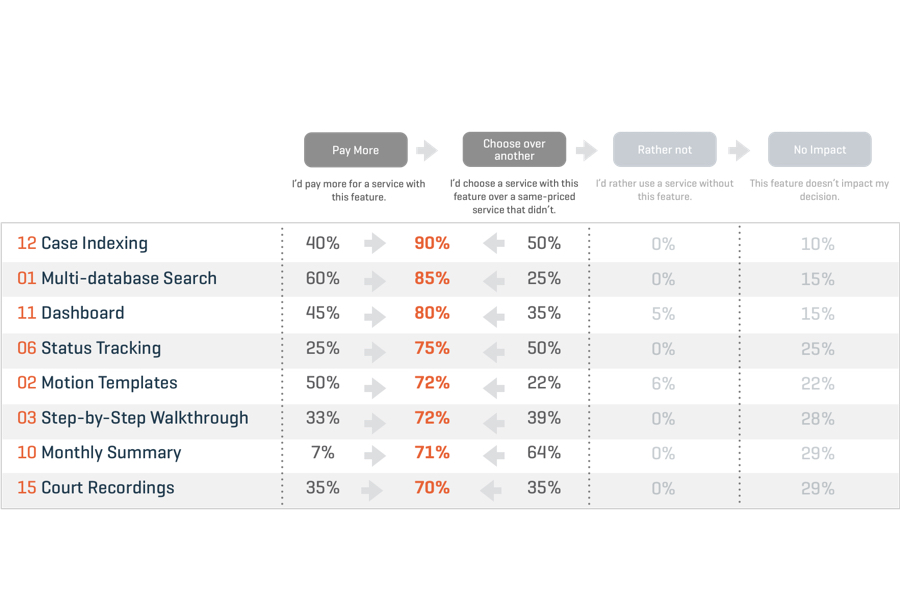
In order to ensure the research insights and newly revealed features would be implemented correctly required a client workshop in which we could confirm the technical feasibility and priority of each feature.
The prioritization workshop was an opportunity to collaborate with the client, many being the original stakeholders we interviewed, to help align on which features to tackle first.
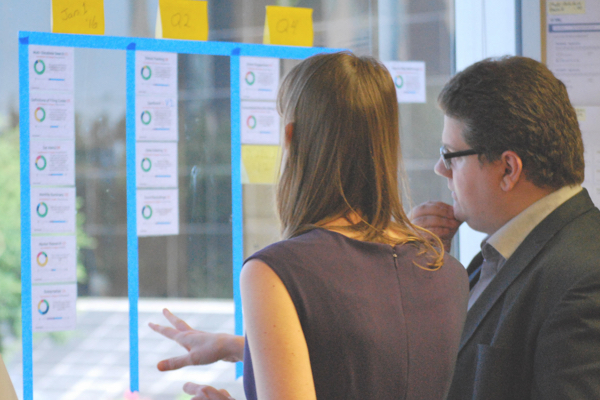
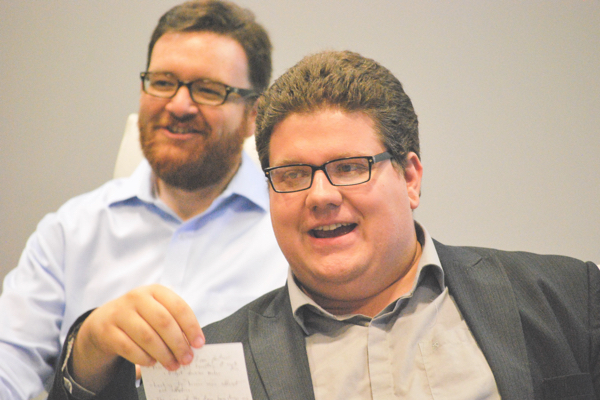
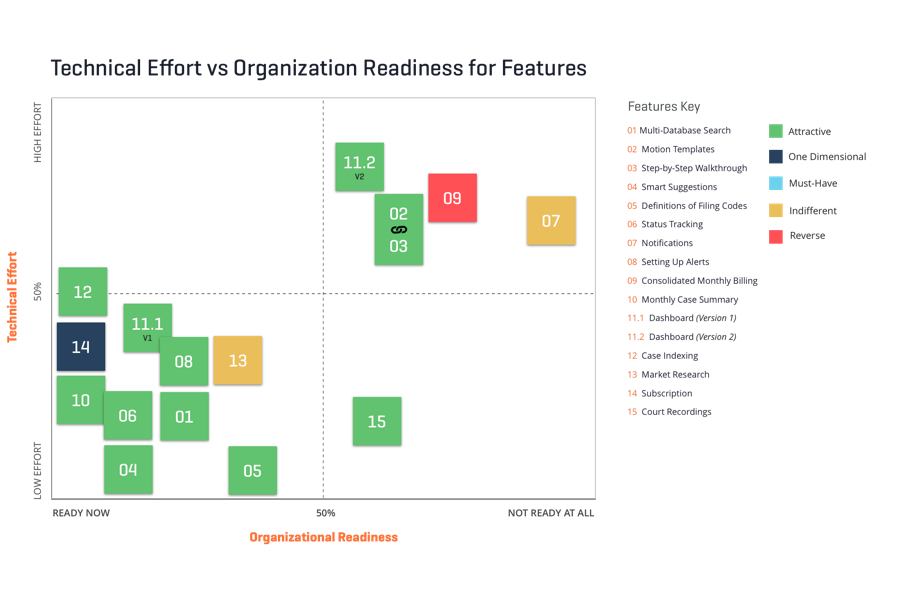
After assessing the feasibility and value of each potential feature, we were able to prescribe a product roadmap that would allow the client to develop a deeply satisfying product while enabling to company to differentiate itself within the market to ultimately help generatr untapped revenue streams.
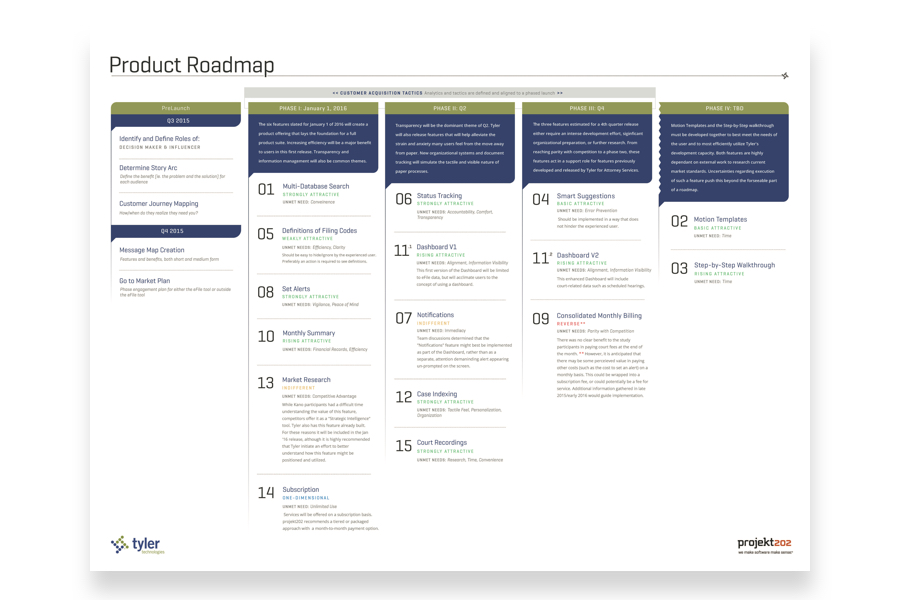
Our study provided critical evidence for determining features that would make the the largest monetary impact. Coefficient diagrams, opportunity matrixes, product roadmaps along with close client collaboration provided key assets for working towards customer valued recommendations.
The project was a tremendous learning opportunity to learn about my company’s research process while altering my perspective on defining product solutions.
An exciting side, the project was elected for the 2017 Convey UX Project Showcase. At the event we discussed the design challenges involved with helping the company understand its users and, in turn, create better document submission software.

